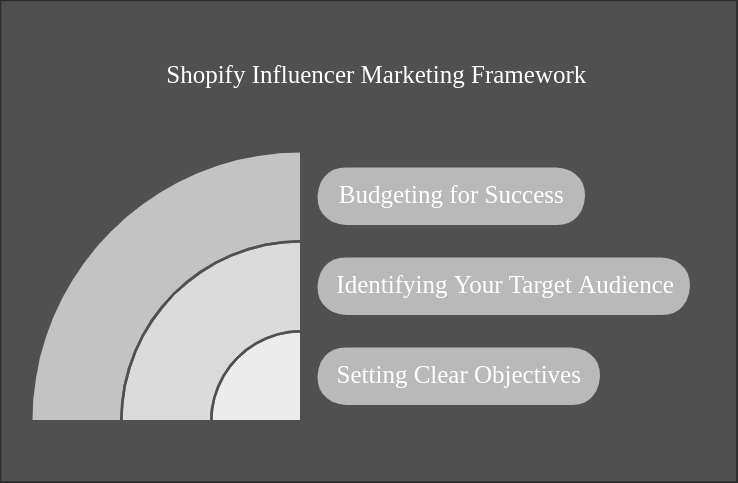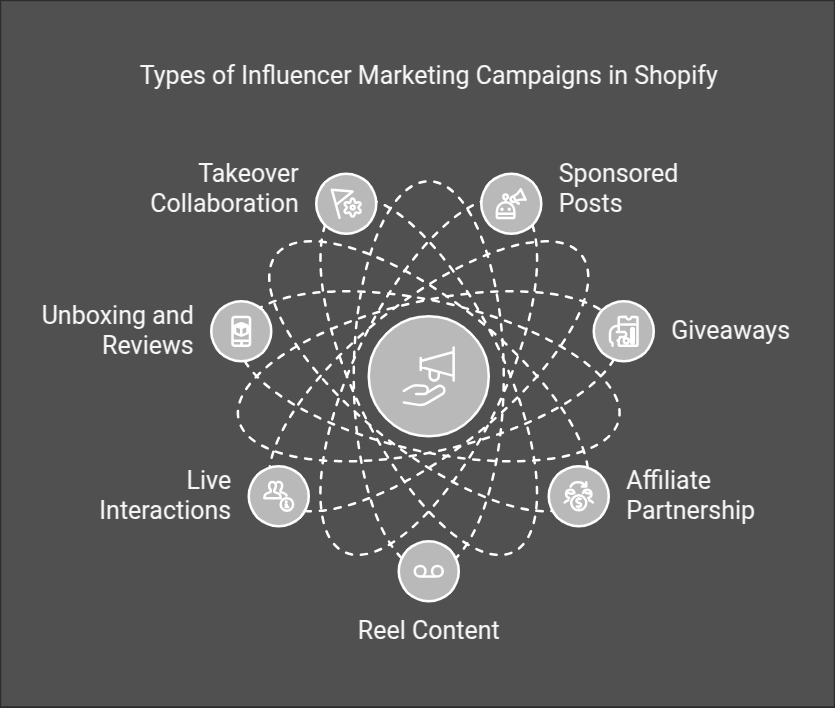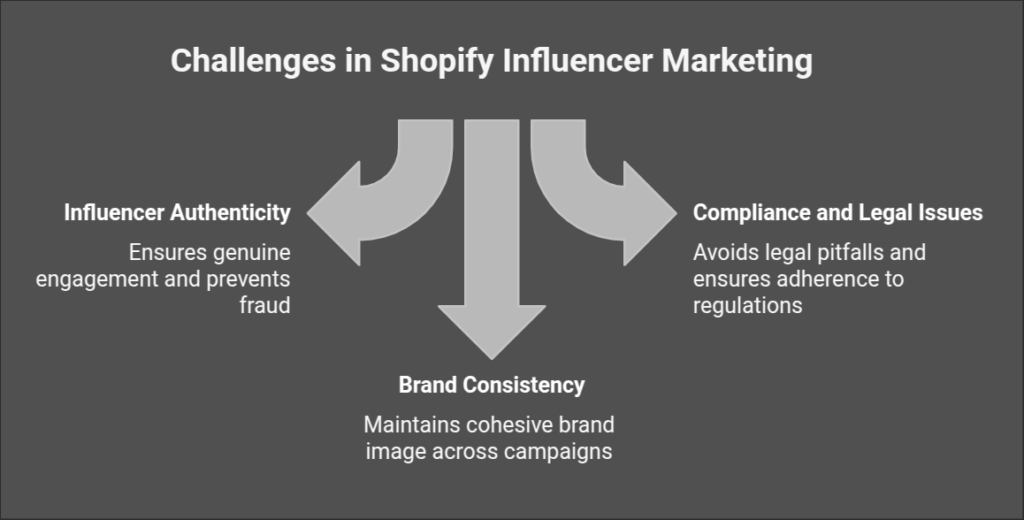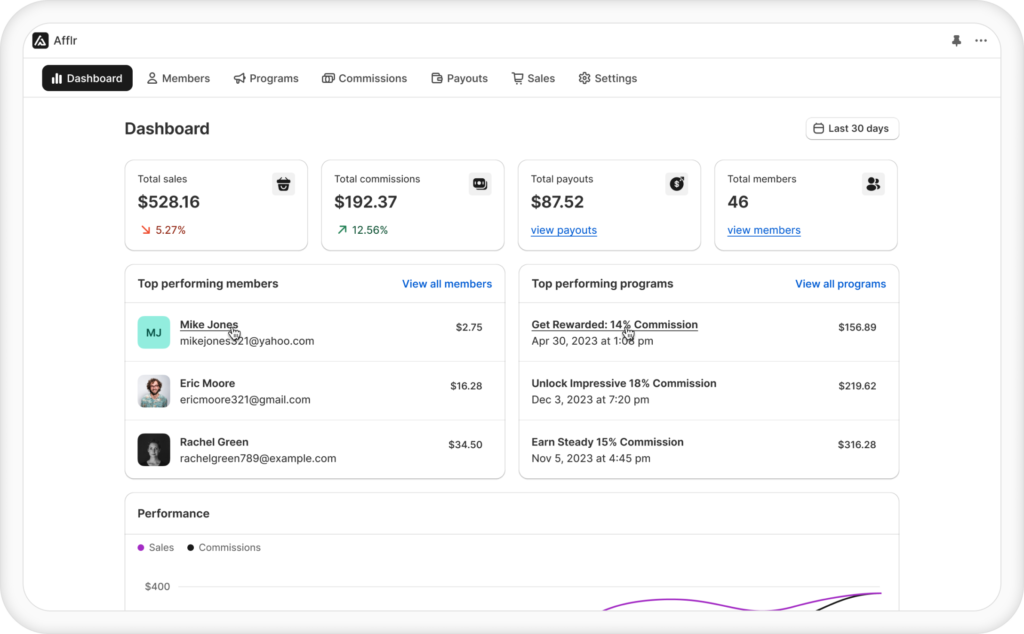If you are new to the world of social media influencers, you are very close to discovering how you are wasting time on traditional advertising.
When I started to explore Shopify influencer marketing, I was skeptical about overlooking the age-old print and billboard promotions. However, as I began to explore the power of word-of-mouth marketing, I understood I hit a lottery in marketing.
Over the next three years, I made all the mistakes so you don’t have to. From accidentally partnering with influencers with paid followers to creating successful Shopify influencer campaigns, I have done it all.
Throughout this guide, I’m going to share every single detail of what I’ve learned about successful brand partnerships in Shopify. Now, you can grow your Shopify store effortlessly without passing through any hurdles.
Dominate Your Niche Using Top Influencers and Grow Your Shopify Store Effortlessly
What is Shopify Influencer Marketing?
When people ask me the definition of Shopify influencer marketing, I like to use a real-world analogy that is easy for people to relate to.
Imagine you’re throwing the world’s best party (your product launch), but instead of personally inviting every guest, you partner with the most popular people in different social circles (influencers) who bring their friends (followers) to the party.
That’s essentially what Shopify influencer marketing is.
A strategic approach to grow your e-commerce business through brand partnerships with trusted influencers in your niche.
While we will explore more about identifying and onboarding niche-based influencers further in the blog, you can catch up on the basics of an affiliate marketing niche.
Are you still wondering how influencer marketing overpowers traditional marketing?
Influencers don’t just promote your products like you see in a TV commercial. They share a lifestyle and values that resonate deeply with their followers.
They speak from personal experience to a set of followers who they have gained organically through authenticity. This form of word-of-mouth marketing in Shopify has its own charm.
If you are left with the question of how this is different from other peer recommendation marketing, then you can take a quick look at this detailed guide on affiliate marketing.

Benefits of Influencer Marketing for Shopify Stores
Your Shopify store growth cannot be achieved through a single means, it is a mix of many things that will make you stand out in the crowd and increase your sales. In fact, 45% of Genzs in Europe have said that they trust influencers over traditional celebs.
Here are some notable benefits of Shopify influencer marketing
- Increased Brand Awareness: Influencers take your brand to their audience. You can reach potential customers who might be hard to access otherwise.
- High Credibility: Any influencer you see on social media who’s worth their salt has built their credibility and dedicated followers over years of hard work. So when they promote your product, their credibility will enhance your brand’s reputation.
- Higher Engagement Rates: Considering how most of us are glued to phones for doom scrolling, Influencer campaigns often generate more likes, comments, and shares compared to traditional ads.
- Improved ROI: Influencer marketing can deliver impressive returns on investment. However, that requires you to plan a reasonable budget. You can take the help of the ROI calculator before fixing your budget for better returns.
- Targeted Reach: Showing your ads to 1 potential customer is much better than showing 1K viewers who don’t care. The latter is something traditional advertising has been doing which influencer marketing resolves.
Traditional Marketing Vs Influencer Marketing
| Factor | Traditional Marketing | Influencer Marketing |
| Reach | Broad | Highly Targeted |
| Trust & Credibility | Skeptical of brand-created ads. | Higher trust. |
| Cost | High production and media placement costs. | Budget-friendly and flexible. |
| Engagement | One-way communication. | Two-way engagement. |
| Speed of Execution | Couple of months | Few days |
| ROI Measurement | Harder to track. | Easier to track. |
| Content Longevity | Short-lived impact. | Reusable for months or years. |
| Brand Control | Full control. | Less control. |
| Authenticity | Can feel scripted and overly polished. | More relatable and natural. |
| Scalability | Limited by budget. | Highly scalable. |
Types of Influencers: A Deep Dive from My Experience
After managing many influencer marketing campaigns, I’ve developed a clear view of each influencer tier.
Let me break down exactly what I’ve learned, including the pros, cons, and ideal scenarios for each type.
1. Nano Influencers (1K-10K followers)
They are best for early-stage brands. Even though their follower count is low, they have very dedicated and tight-knit followers.
Collaborating with nano influencers, especially for hyper-local or niche-specific products can be highly fruitful.
Why do nano influencers work so well? Their audiences are typically hyper-engaged and trust them a lot. I’ve found they have:
- 3-5x higher engagement rates than larger influencers
- 85% lower cost per engagement
- More authentic, two-way conversations with followers
- Higher response rates to follower questions about products
2. Micro-Influencers (10K-100K followers)
This is where most Shopify owners spend about 60% of their digital marketing budgets, and for good reason. They’re perfect for growing brands on a budget.
Similar to nano influencers, they have a very solid audience that is highly engaged. They’re the sweet spot for Shopify store growth.
They will produce a variety of content like feed posts, stories, and Reels at reasonable prices.
Through Shopify influencer marketing with micro-influencers, you can gain
- Direct sales
- New email subscribers
- High-quality user-generated content
- Increase in website traffic
If you think nano and micro-influencers confuse you, this guide on nano vs micro-influencers can solve your queries.
3. Macro-Influencers (100K-1M followers)
Now, this is where things get interesting and expensive. I always tell Shopify owners that macro-influencers are powerful but volatile if not handled correctly.
They are perfect for:
- Product launches
- Building immediate brand credibility
- Reaching a broader audience quickly
- Creating high-production-value content
4. Niche Influencers: The Hidden Gems
These are possibly my favorite category to partner with for influencer marketing in Shopify. They are extremely passionate about the niche they are working on.
They might have anywhere from 5K to 500K followers, but what matters is their specific focus. The key to success with niche influencers is understanding their unique value proposition.
Upselling in Shopify is also easy with such niche influencers.
Developing Shopify Influencer Marketing Strategy: My Proven Framework
I’ve developed a Shopify influencer marketing framework that can help you start your marketing journey ASAP.
Let me walk you through exactly how to create a strategy that works, based on my experience.

- Setting Clear Objectives (The Foundation)
Many Shopify owners jump into influencer partnerships without clear goals. I learned the hard way that “getting more sales” can’t be the only objective.
Firstly, identify primary and secondary objectives.
For example, for a sustainable fashion brand,
Primary goal: Generate $50,000 in sales from influencer partnerships in Q1
Secondary goal: Build a library of 100 pieces of user-generated content
- Identifying Your Target Audience (Data-Driven Approach)
This is where many Shopify store growth strategies stumble. Instead of just looking at basic demographics, I use a three-layer approach to audience identification:
Layer 1: Demographics and Behavior
Layer 2: Psychographics
Layer 3: Community Dynamics
- Budgeting for Success (Real Numbers and ROI)
Let me share exactly how to structure budgets for Shopify influencer marketing campaigns, based on different business sizes:
- For Startups ($5,000-$10,000 monthly budget)
- For Growing Brands ($10,000-$25,000 monthly budget):
- For Established Brands ($25,000+ monthly budget):
Pro tip: I always reserve 10-15% of any budget for unexpected opportunities.
Finding and Partnering with Influencers: My Insider Process
After years of running digital marketing campaigns, I’ve developed a foolproof system for finding and verifying influencers.
Here’s my exact process:
1. Discovery Process
While everyone knows about standard influencer platforms, here’s some advanced stack for finding hidden gems for Shopify influencer marketing
- Primary Research Tools:
- Upfluence (best for data-driven discovery)
- AspireIQ (great for relationship management)
- Heepsy (excellent for authenticity checking)
- Secondary Research Methods:
- Instagram Saved Collections (I organize by niche)
- TikTok “For You” page mining
- Competitor collaboration analysis
- Hashtag research using specialized tools
2. Authentication System
I developed this comprehensive system to identify the best Shopify influencer partners.
- Engagement Quality Analysis
- Comment authenticity check
- Engagement rate patterns
- Follower-to-like ratio trends
- Story view consistency
- Growth Pattern Verification
- Historical follower growth
- Engagement rate stability
- Content evolution
- Platform presence longevity
- Content Quality Assessment
- Production value consistency
- Brand alignment tracking
- Caption writing style
- Storytelling ability
Checklist: Before Reaching Out to Influencers
| Step | Key Considerations |
| Define Your Goals | Are you aiming for brand awareness, conversions, engagement, or content creation? What KPIs will measure success (followers, website visits, sales, etc.)? |
| Identify Your Target Audience | Who is your ideal audience? (Age, interests, location, behaviors) Which platforms do they engage with most? |
| Research and Shortlist Influencers | Do they align with your brand values and aesthetics? Are they reaching your ideal audience? Do they have real engagement (not fake followers/likes)? |
| Analyze Engagement & Credibility | How does their engagement rate compare to their follower count? Do they have genuine conversations in the comments? Have they successfully worked with brands before? |
| Review Past Content & Brand Fit | Does their content match your brand image? Have they promoted similar products? Are they consistent in quality and messaging? |
| Set Your Budget & Collaboration Type | What type of collaboration will it be? (Paid sponsorships, gifted products, commission-based, long-term partnerships) Do you have a clear influencer marketing budget? |
| Prepare a Clear Offer & Pitch | What’s in it for them? (Payment, product exclusivity, exposure, affiliate commissions) Write a short, personalized pitch explaining why they’re a great fit. Clearly outline expectations (content format, posting timeline, key messaging). |
| Ensure You Have Tracking & Legal Terms Ready | Will you provide a contract or agreement? Do you have UTM links, discount codes, or tracking pixels ready? Are there any content usage rights to clarify? |
Simplify Influencer Marketing! Automate and Track Every Conversion to Maximize Engagement with Afflr!
Crafting Effective Influencer Marketing Campaigns
Successful execution of Shopify influencer marketing comes down to a balance of structure and creativity.
Here’s a framework I use to create campaigns that not only drive sales but also build lasting brand value.
1. Content Collaboration with Influencers
The first step is understanding that different content types serve different purposes in your online brand promotion funnel.
- Awareness Content: I always start with content that showcases your brand story and values. This type of content will perform 3x better than traditional product showcases because it creates context and emotional connection.
- Educational Content: This is where your content creators really shine. I encourage influencers to create detailed how-to content, tutorials, and comparison videos. This gives a personal touch.
- Conversion Content: This only works after you’ve laid the groundwork with the other two types. I structure conversion content around genuine testimonials and authentic product experiences.
2. Platform-Specific Shopify Influencer Marketing Strategies

Let me share my platform-specific insights for maximizing your Shopify store growth:
- Instagram Strategy:
- Stories: 35% higher reach
- Reels: Average 2.5x higher reach than static posts
- Feed Posts: Ideal for detailed product information and brand storytelling
- Lives: Great for product launches and Q&A sessions
- TikTok Approach
- With TikTok removing fake engagement by eliminating 236 fake million likes, it is great for organic reach.
- Trending videos with product integration
- Behind-the-scenes content showing product creation or shipping
- Customer transformation videos
- Authentic reviews with specific details
- “Hidden feature” reveals
- YouTube Strategy
- Shorts: 2x higher engagement than long-form videos
- Long-form Videos: Best for in-depth tutorials, case studies, and product storytelling.
- Live Streams: Engage with audiences through Q&As, product launches, and expert interviews.
- Community Posts: Use polls, questions, and updates to increase interaction.
- LinkedIn Strategy
- Thought Leadership Posts: Share industry insights, trends, and expert opinions to establish authority.
- Document Posts: Upload PDFs with step-by-step guides, reports, or valuable resources.
- Video Content: Showcase behind-the-scenes, employee stories, and company culture for authenticity.
- Carousel Posts: Great for breaking down complex topics, sharing case studies, or highlighting product benefits.
- Pinterest Strategy
- Idea Pins: High engagement format, perfect for tutorials, product styling, and DIY content.
- Shoppable Pins: Directly link products to boost conversions and organic discovery.
- Trending Aesthetic Boards: Curate boards around lifestyle themes that align with your brand.
- Before & After Pins: Showcase transformations using your products for visual impact.
How to Set up Influencer Marketing for Shopify?
Setting up Shopify influencer marketing is a technical process which involves the following steps:
1. Pick the Right Influencer marketing app for Shopify
Using a Shopify app to automate your influencer marketing is non-negotiable. While setting up the commission and following up with sales might seem simple, it is a tedious process if done manually.
I would, therefore, suggest you check out the best influencer apps in Shopify to find the one that suits you best.
There are various features to consider while choosing an influencer marketing app like ease of commission setup, tracking, payout options, etc. Once you have finalized one, the next steps can be easy create an influencer marketing program in Shopify.
2. Onboard the Perfect Shopify Influencers
We already discussed where to find influencers and how to validate them. If you have your list ready, then you can easily add them to your influencer marketing program in Shopify manually or using attractive signup forms.
Some Shopify merchants also prefer creating a separate affiliate landing page to convey all program-related information to their influencers.
3. Customize Your Influencer Rewards
What’s in it for the influencers? There are various types of commission models in Shopify that will let you decide this.
On the other hand, a Shopify app that helps with Influencer Marketing will help you effortlessly set commissions for your Shopify affiliate programs.
4. Track Your Success
Monitoring KPIs like clicks, sales, and engagement can help significantly in reviewing and refining your influencer program in Shopify for better results.
This doesn’t have to scare you because most influencer marketing tools have built-in analytics features.
In further sessions, let’s discuss in more detail how to measure the important key performance indicators.
Measuring the Success of Influencer Marketing Campaign
I am sharing here a comprehensive measurement framework for Shopify influencer marketing that goes beyond simple engagement metrics. To implement this, you can integrate tools with your marketing.
Here’s how I break it down:
1. Immediate Impact Metrics
These are your quick wins – the metrics that show immediate campaign performance:
- Direct Response Metrics:
- Sales through unique discount codes
- Click-through rates
- Landing page conversion rates
- Email sign-ups from influencer traffic
- Engagement Metrics:
- Save rates (more important than likes)
- Story completion rates
- Comment quality analysis
- Share rates and repost tracking
2. Long-Term Value Metrics
These are the often ignored but important metrics of influencer marketing.
Here’s what to track over 3-6 months:
- Brand Health Indicators:
- Branded search volume growth
- Social media follower quality
- User-generated content count
- Customer sentiment analysis
- Customer Value Metrics:
- Lifetime value of influencer-acquired customers
- Repeat purchase rates
- Average order value trends
- Customer loyalty program participation
Case Study: Shopify Influencer Marketing Campaign
Authentic storytelling is a solid influencer marketing strategy. Olay, a beauty brand, adopted this to create success unheard of through traditional advertising.
The Strategy
Olay launched the “Fearless 9” campaign that demonstrated the true potential of influencer partnerships.
Olay didn’t just select influencers, they curated a collection of diverse female voices. The lineup included:
The Campaign
Using the #FaceAnything hashtag, Olay sparked a movement encouraging women to embrace natural beauty. The “28-day challenge” resonated deeply with Millennials and Gen Z. They created authenticity through personal stories over traditional advertising.
The Results
Olay’s campaign achieved significant social reach, including over 21 million video views and an 8.33% engagement rate.
Olay successfully increased brand awareness and fostered brand loyalty using a core group of influencers, supporting authentic storytelling, and aligning with their audience’s values
Navigating Challenges in Shopify Influencer Marketing

Here’s my comprehensive guide to overcoming common challenges while implementing influencer marketing:
Challenge 1: Influencer Authenticity and Fraud Detection
The Problem: Fake followers and engagement have become a significant issue while working with influencers.
My Proven Detection Strategy:
- Use advanced analytics tools
- Analyze follower growth patterns
- Check comment quality and interaction rates
Challenge 2: Compliance and Legal Considerations
Online brand promotion requires careful attention to legal details:
Key Compliance:
- Develop comprehensive collaboration agreements
- Ensure clear FTC disclosure guidelines
- Create content approval processes
- Maintain transparent communication through affiliate email marketing
Challenge 3: Maintaining Brand Consistency
How to ensure influencers represent your brand accurately:
- Develop detailed brand guidelines
- Create content template libraries
- Offer creative direction without restricting authenticity
- Implement training and communication
Future Trends in Influencer Marketing for Shopify
I’m excited about emerging trends in digital marketing, especially in the way influencer partnerships happen.
Some key places to look out for in Shopify influencer marketing are:
Emerging Technologies
- AI-powered influencer matching algorithms
- Advanced performance prediction tools
- Augmented reality product experiences
Evolving Consumer Behaviors
- Increased demand for genuine, value-driven content
- Rise of purpose-driven brand partnerships
- Growing importance of micro-communities
- Emphasis on long-term relationship building
Partner with Influencers and Scale Your Shopify Store Sale By 35% Using Afflr.
Conclusion
Shopify Influencer marketing isn’t about following a perfect formula. It’s about experimenting, learning, and adapting.
This blog gives you everything you need to know before you start your journey with influencer collaboration and achieve Shopify store growth.
For successful influencer collaboration in Shopify you don’t need a high budget, these strategies will take you a long way.
Further Reading
- Affiliate Marketing vs Influencer Marketing: A Full Guide
- Quick Start Guide: Affiliate Marketing for Shopify Beginners
- Proven Strategies for Fueling Shopify Affiliate Growth in 2024
- How can Referral Marketing in Shopify benefit your store?
Frequenty Asked Questions:
To find the best influencers for your Shopify store, use tools like AspireIQ or simply search social media platforms. Make sure you find the influencers from your relevant niche.
You can promote Shopify products on Instagram by creating a dedicated Shopify Instagram Marketing campaign that can relate to and engage your target audience. You can hire top social media creators from your niche, run paid campaigns, and engage with audiences.
To track the success of Shopify influencer marketing campaigns you can use Shopify apps like Afflr. This can help monitor metrics like engagement, clicks, and conversions.
Yes, there are Shopify apps for influencer marketing apps like Afflr, Refersion, and Social Snowball. This can help you manage and track influencer campaigns seamlessly.
